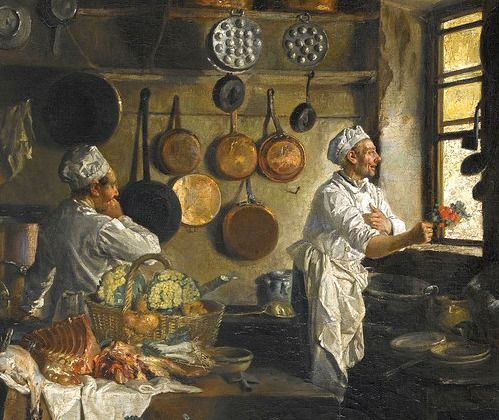This week, we’re diving into Chef Wear, a uniform category that has evolved over centuries, shaped by culinary traditions, safety needs, and professional identity. The classic white double-breasted chef’s jacket, toque (hat), checkered pants, and aprons all serve functional and historical purposes. But how did they come to be? Let’s take a look.
A Quick History of the Chef Coat
The modern chef coat dates back to the late 19th century, thanks to Marie-Antoine Carême, a pioneer in French cuisine. He introduced the now-iconic white double-breasted jacket, which allowed chefs to reverse it when one side became dirty, keeping a clean and professional appearance in the kitchen.
But why white, a color that shows stains so easily? White was chosen to symbolize cleanliness and professionalism, reassuring diners that their food was being prepared in a sanitary environment. Functionally, white fabric also deflects heat, making it a practical choice in the hot conditions of a kitchen.
By the late 20th century, colored chef coats began gaining popularity. Darker colors became especially common with open kitchens, where chefs were visible to guests and needed a polished, stain-resistant look. Another key evolution? Pockets! Today’s chef coats often feature chest and shoulder pockets for convenience, holding essentials like pens, thermometers, and tasting spoons.
The Chef Hat: More Than Just a Fashion Statement
The chef hat (toque blanche) has always been a symbol of rank and experience in the kitchen. Historically, the taller the hat, the more experienced the chef. While traditional tall toques are still worn in fine dining kitchens, many modern chefs opt for skull caps, beanies, or bandanas, offering a more comfortable and practical alternative. Regardless of style, chef headwear serves an important function, keeping hair securely in place for hygiene and safety.
Over the past few decades, hats and beanies have started coming in a variety of colors, adding a bit of fun and personality to kitchen wear.
The Evolution of Chef Pants
Traditional chef pants are either solid black or the classic houndstooth pattern, designed to hide stains and spills. Comfort is key in the fast-paced kitchen environment, which is why most chef pants feature elastic waistbands with drawstrings.
But today’s chef wear has evolved with more modern, tailored fits and extra pockets, including cargo-style options for added utility. As chefs are constantly on the move, comfort and functionality remain top priorities.
The Essential Apron
Every chef, line cook, and restaurant worker wear an apron, but chefs typically prefer the bistro apron. Tied at the waist and extending just below the knee, this style provides protection from spills and heat while allowing for ease of movement.
Aprons have also evolved with modern materials, including stain-resistant fabrics and designs that cater to the fast-moving kitchen environment.
Modern Trends: Performance Fabrics and Personalization
Like all apparel, chef wear continues to evolve. Traditional heavy cotton twills are being replaced with breathable, moisture-wicking performance fabrics, often featuring stretch panels and mesh inserts for improved airflow.
Personalization has also become a big trend, with chefs adding embroidered logos, restaurant branding, and even certification patches to their coats. Some open kitchens are even outfitting prep cooks in knit tops with bib aprons, embracing a more casual, yet functional look.
Next Time You Dine Out, Take a Look!
Next time you go out to eat, take a moment to notice what the chef is wearing. Their uniform is more than just workwear, it is a reflection of history, professionalism, and creativity in the culinary world.




















